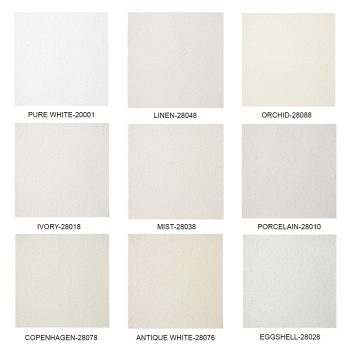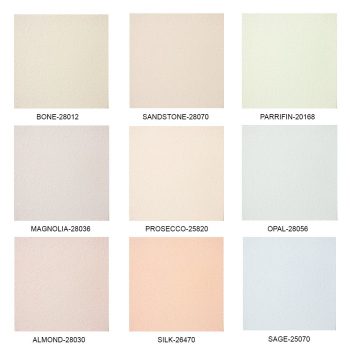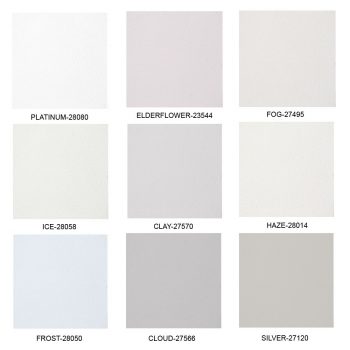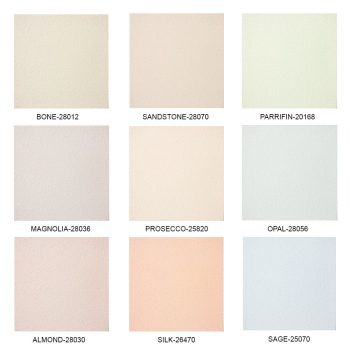Ultimate Guide to Pebble & Wet Dashing
The façade of a home or building serves as the first impression, offering glimpses into its architectural essence and the aesthetics preferred by its inhabitants. As exterior design has evolved through the years, so have the techniques employed to achieve these desired impressions. From rustic, textured looks to sleek, modern finishes, the range of available options can cater to varied tastes and architectural styles. Within this vast spectrum of external finishes, wet dashing and pebble dashing emerge as distinct and historically popular choices in specific regions. These methods, although seemingly rudimentary, bear the weight of tradition and the promise of durability. As we embark on this exploration, we’ll dive deep into the nuances of these techniques, understand their application, and assess their position in the contemporary realm of exterior design.
The fundamentals of pebble and wet dashing
External finishing techniques are as much about aesthetics as they are about protection. Wet and pebble dashing stand out as prominent techniques within this landscape, each offering a unique aesthetic and a barrier against external elements. Their longstanding popularity, especially in certain regions, owes as much to their durability as to their distinct visual characteristics. Here’s a deeper dive into their intricacies.
Often interchangeably referred to as roughcasting, wet dashing is not just about adding a textured look. It’s the art of embedding small stones or chippings into a wet render mix. This provides:
- Texture and Aesthetics: The small stones give a rough, grainy appearance which is tactile and adds character to the building.
- Protection: Beyond aesthetics, these stones, set within the wet render, offer an added shield against weather elements. The granular surface can deter water runoff, reducing the potential for water-related damages.
- Insulation: The added layer can also serve as an extra insulation measure, aiding in temperature regulation within the property.
As the name suggests, pebble dashing takes wet dashing a step further by using pebbles or larger aggregates instead of the finer chippings. This results in:
- Bolder Texture: The more substantial aggregate produces a pronounced texture, which is more rugged and tactile than wet dashing.
- Customisation: Pebble dashing often allows for a greater range of customisation in terms of colour and aggregate type, catering to specific design preferences.
- Durability: Larger pebbles, given their size and weight, ensure an even sturdier finish, which is particularly resistant to cracks and chips.
Both these methods, rooted in age-old building traditions, are seen as reliable solutions to ensure longevity while also offering a classic, time-tested look. Their application requires skill, ensuring that the aggregates are evenly distributed and securely set within the render, thus producing an enduring and visually consistent finish.
Materials and application
The choice of materials, unsurprisingly, plays a pivotal role in determining the final appearance and durability of the rendered surface.
For wet dashing, the primary materials include a lime or cement-based render mix accompanied by small stones or chippings. Conversely, pebble dashing requires a similar render mix but swaps out the smaller stones for pebbles or more sizeable aggregate chunks.
In terms of tools, the arsenal is relatively straightforward. Professionals typically require a trowel, a hawk (a hand-held board to carry the mortar or plaster), a dash receiver or board to catch falling aggregates, and mixing equipment.
The application process commences with meticulous preparation. Any existing render is stripped away, revealing a clean wall surface. Following any necessary repairs, a base coat is deftly applied to ensure an even underlayer. It’s upon this wet base coat that the magic happens. Using the trowel and dash receiver, the chosen aggregate is ‘dashed’ or thrown against the wet layer. The aggregate embeds itself, forming a textured overlay. The setting period that follows is crucial, allowing the concoction to solidify and establish its durable finish.
Comparing pebble and wet dashing to other rendering techniques
The realm of external rendering is rich with options, each boasting its own set of advantages, aesthetic values, and functional properties. While wet and pebble dashing has long-standing traditions, other methods like silicone render and monocouche render have emerged as modern favourites.
Often seen as the bedrock of rendering methods, this mix of sand, cement, and occasionally lime produces a smooth, paint-ready finish. Its enduring popularity stems from its ease of application, familiarity among tradesmen, and the reliable results it guarantees.
Silicone Render:
- Composition and Properties: Silicone render incorporates silicone water repellents as a key component in the render system. This ensures a high degree of water resistance while allowing vapour to pass through, ensuring breathability.
- Flexibility: Silicone renders stand out for their elasticity. They can expand and contract with varying temperatures, drastically reducing the risk of cracking. This is particularly beneficial in climates with significant temperature fluctuations.
- Maintenance and Aesthetics: One of the remarkable features of silicone render is its self-cleaning ability. Dirt and pollutants often find it hard to stick to the surface, ensuring the finish remains cleaner for longer. Available in a variety of colours, it obviates the need for painting and provides a contemporary, sleek appearance.
Monocouche Render:
- Single Layer Application: Despite the name (‘mono’ meaning one, and ‘couche’ meaning layer in French), the monocouche render is applied in two coats.
- Composition: Typically made from cement, lime, specific performance-enhancing additives, and pigments, this render is known for its strength and durability.
- Aesthetics: Monocouche render offers a smooth, mottled finish, available in various colours, reducing the need for subsequent painting. Its ability to resist water penetration while remaining breathable is a major advantage, particularly in wet climates.
Why is Silicone Render better?
Rendering techniques, each with its distinctive merits, serve a dual purpose: they protect and beautify the exterior of our homes. Wet and pebble dashing, rooted in tradition, offers notable durability and added insulation. Their rugged appearance, while enduring, often feels out of step with contemporary design preferences. Moreover, any damage they incur can be challenging to repair seamlessly, given their unique textures.
In contrast, silicone render emerges as a front-runner in modern construction. It’s prized for its flexibility, ensuring reduced susceptibility to cracking in fluctuating temperatures. Furthermore, its self-cleaning properties simplify maintenance, a boon for homeowners seeking both functionality and aesthetics. Breathability, a standout feature, ensures moisture doesn’t get trapped, thereby reducing potential dampness or mould issues. The render’s sleek appearance, combined with a plethora of colour choices, renders it a favourite among contemporary architects and homeowners. However, its superior properties come at a cost, both in terms of monetary investment and the need for specialised application skills.
-
Silicone Render (EWI-075) – 25KG
Rated 4.83 out of 5From £83.99 Incl. VATFrom £69.99 Excl. VAT -
Nano Drex Silicone Render (EWI-077) 25kg
Rated 4.57 out of 5From £151.19 Incl. VATFrom £125.99 Excl. VAT -
Premium Bio Silicone Render (EWI-076) – 25kg
Rated 4.00 out of 5From £113.39 Incl. VATFrom £94.49 Excl. VAT -
Silicone Silicate Render (EWI-040) – 25kg
Rated 5.00 out of 5From £71.99 Incl. VATFrom £59.99 Excl. VAT
Do you prefer wet dashing or silicone render? Let us know below!
Facebook
Twitter
LinkedIn
Your cart
Trade Account Login

We use cookies on our website to give you the most relevant experience by remembering your preferences and repeat visits. By clicking “Accept All”, you consent to the use of ALL the cookies. However, you may visit "Cookie Settings" to provide personalised consent.
Manage consent
Privacy Overview
This website uses cookies to improve your experience while you navigate through the website. Out of these, the cookies that are categorized as necessary are stored on your browser as they are essential for the working of basic functionalities of the website. We also use third-party cookies that help us analyze and understand how you use this website. These cookies will be stored in your browser only with your consent. You also have the option to opt-out of these cookies. But opting out of some of these cookies may affect your browsing experience.
Necessary cookies are absolutely essential for the website to function properly. These cookies ensure basic functionalities and security features of the website, anonymously.
| Cookie | Duration | Description |
|---|---|---|
| __stripe_mid | 1 year | This cookie is set by Stripe payment gateway. This cookie is used to enable payment on the website without storing any patment information on a server. |
| __stripe_sid | 30 minutes | This cookie is set by Stripe payment gateway. This cookie is used to enable payment on the website without storing any patment information on a server. |
| _GRECAPTCHA | 5 months 27 days | This cookie is set by the Google recaptcha service to identify bots to protect the website against malicious spam attacks. |
| apbct_cookies_test | session | CleanTalk sets this cookie to prevent spam on comments and forms and act as a complete anti-spam solution and firewall for the site. |
| apbct_page_hits | session | CleanTalk sets this cookie to prevent spam on comments and forms and act as a complete anti-spam solution and firewall for the site. |
| apbct_prev_referer | session | Functional cookie placed by CleanTalk Spam Protect to store referring IDs and prevent unauthorized spam from being sent from the website. |
| apbct_site_landing_ts | session | CleanTalk sets this cookie to prevent spam on comments and forms and act as a complete anti-spam solution and firewall for the site. |
| apbct_site_referer | 3 days | This cookie is placed by CleanTalk Spam Protect to prevent spam and to store the referrer page address which led the user to the website. |
| apbct_timestamp | session | CleanTalk sets this cookie to prevent spam on comments and forms and act as a complete anti-spam solution and firewall for the site. |
| apbct_urls | 3 days | This cookie is placed by CleanTalk Spam Protect to prevent spam and to store the addresses (urls) visited on the website. |
| AWSALBCORS | 7 days | This cookie is managed by Amazon Web Services and is used for load balancing. |
| cookielawinfo-checkbox-advertisement | 1 year | Set by the GDPR Cookie Consent plugin, this cookie is used to record the user consent for the cookies in the "Advertisement" category . |
| cookielawinfo-checkbox-analytics | 11 months | This cookie is set by GDPR Cookie Consent plugin. The cookie is used to store the user consent for the cookies in the category "Analytics". |
| cookielawinfo-checkbox-functional | 11 months | The cookie is set by GDPR cookie consent to record the user consent for the cookies in the category "Functional". |
| cookielawinfo-checkbox-necessary | 11 months | This cookie is set by GDPR Cookie Consent plugin. The cookies is used to store the user consent for the cookies in the category "Necessary". |
| cookielawinfo-checkbox-others | 11 months | This cookie is set by GDPR Cookie Consent plugin. The cookie is used to store the user consent for the cookies in the category "Other. |
| cookielawinfo-checkbox-performance | 11 months | This cookie is set by GDPR Cookie Consent plugin. The cookie is used to store the user consent for the cookies in the category "Performance". |
| ct_checkjs | session | CleanTalk–Used to prevent spam on our comments and forms and acts as a complete anti-spam solution and firewall for this site. |
| ct_fkp_timestamp | session | CleanTalk sets this cookie to prevent spam on the site's comments/forms, and to act as a complete anti-spam solution and firewall for the site. |
| ct_pointer_data | session | CleanTalk sets this cookie to prevent spam on the site's comments/forms, and to act as a complete anti-spam solution and firewall for the site. |
| ct_ps_timestamp | session | CleanTalk sets this cookie to prevent spam on the site's comments/forms, and to act as a complete anti-spam solution and firewall for the site. |
| ct_sfw_pass_key | 1 month | CleanTalk sets this cookie to prevent spam on comments and forms and act as a complete anti-spam solution and firewall for the site. |
| ct_timezone | session | CleanTalk–Used to prevent spam on our comments and forms and acts as a complete anti-spam solution and firewall for this site. |
| elementor | never | This cookie is used by the website's WordPress theme. It allows the website owner to implement or change the website's content in real-time. |
| viewed_cookie_policy | 11 months | The cookie is set by the GDPR Cookie Consent plugin and is used to store whether or not user has consented to the use of cookies. It does not store any personal data. |
Functional cookies help to perform certain functionalities like sharing the content of the website on social media platforms, collect feedbacks, and other third-party features.
| Cookie | Duration | Description |
|---|---|---|
| __zlcmid | 1 year | This cookie is used by Zendesk live chat and is used to store the live chat ID. |
| bcookie | 2 years | LinkedIn sets this cookie from LinkedIn share buttons and ad tags to recognize browser ID. |
| bscookie | 2 years | LinkedIn sets this cookie to store performed actions on the website. |
| lang | session | LinkedIn sets this cookie to remember a user's language setting. |
| lidc | 1 day | LinkedIn sets the lidc cookie to facilitate data center selection. |
| UserMatchHistory | 1 month | LinkedIn sets this cookie for LinkedIn Ads ID syncing. |
Performance cookies are used to understand and analyze the key performance indexes of the website which helps in delivering a better user experience for the visitors.
| Cookie | Duration | Description |
|---|---|---|
| __utma | 2 years | This cookie is set by Google Analytics and is used to distinguish users and sessions. The cookie is created when the JavaScript library executes and there are no existing __utma cookies. The cookie is updated every time data is sent to Google Analytics. |
| __utmb | 30 minutes | Google Analytics sets this cookie, to determine new sessions/visits. __utmb cookie is created when the JavaScript library executes and there are no existing __utma cookies. It is updated every time data is sent to Google Analytics. |
| __utmc | session | The cookie is set by Google Analytics and is deleted when the user closes the browser. It is used to enable interoperability with urchin.js, which is an older version of Google Analytics and is used in conjunction with the __utmb cookie to determine new sessions/visits. |
| __utmt | 10 minutes | Google Analytics sets this cookie to inhibit request rate. |
| __utmv | 2 years | The __utmv cookie is set on the user's device, to enable Google Analytics to classify the visitor. |
| __utmz | 6 months | Google Analytics sets this cookie to store the traffic source or campaign by which the visitor reached the site. |
| sib_cuid | 6 months | Purechat uses this cookie to send data to purechat.com, to connect visitors to the reservation team and track visitors to stay on portal. |
| SRM_B | 1 year 24 days | Used by Microsoft Advertising as a unique ID for visitors. |
Analytical cookies are used to understand how visitors interact with the website. These cookies help provide information on metrics the number of visitors, bounce rate, traffic source, etc.
| Cookie | Duration | Description |
|---|---|---|
| _ga | 2 years | The _ga cookie, installed by Google Analytics, calculates visitor, session and campaign data and also keeps track of site usage for the site's analytics report. The cookie stores information anonymously and assigns a randomly generated number to recognize unique visitors. |
| _gat_gtag_UA_61069204_2 | 1 minute | Set by Google to distinguish users. |
| _gat_UA-61069204-2 | 1 minute | A variation of the _gat cookie set by Google Analytics and Google Tag Manager to allow website owners to track visitor behaviour and measure site performance. The pattern element in the name contains the unique identity number of the account or website it relates to. |
| _gcl_au | 3 months | Provided by Google Tag Manager to experiment advertisement efficiency of websites using their services. |
| _gid | 1 day | Installed by Google Analytics, _gid cookie stores information on how visitors use a website, while also creating an analytics report of the website's performance. Some of the data that are collected include the number of visitors, their source, and the pages they visit anonymously. |
| _uetsid | 1 day | This cookies are used to collect analytical information about how visitors use the website. This information is used to compile report and improve site. |
| CONSENT | 2 years | YouTube sets this cookie via embedded youtube-videos and registers anonymous statistical data. |
Advertisement cookies are used to provide visitors with relevant ads and marketing campaigns. These cookies track visitors across websites and collect information to provide customized ads.
| Cookie | Duration | Description |
|---|---|---|
| _fbp | 3 months | This cookie is set by Facebook to display advertisements when either on Facebook or on a digital platform powered by Facebook advertising, after visiting the website. |
| ANONCHK | 10 minutes | The ANONCHK cookie, set by Bing, is used to store a user's session ID and also verify the clicks from ads on the Bing search engine. The cookie helps in reporting and personalization as well. |
| fr | 3 months | Facebook sets this cookie to show relevant advertisements to users by tracking user behaviour across the web, on sites that have Facebook pixel or Facebook social plugin. |
| MUID | 1 year 24 days | Bing sets this cookie to recognize unique web browsers visiting Microsoft sites. This cookie is used for advertising, site analytics, and other operations. |
| NID | 6 months | NID cookie, set by Google, is used for advertising purposes; to limit the number of times the user sees an ad, to mute unwanted ads, and to measure the effectiveness of ads. |
| test_cookie | 15 minutes | The test_cookie is set by doubleclick.net and is used to determine if the user's browser supports cookies. |
| uuid | 6 months | MediaMath sets this cookie to avoid the same ads from being shown repeatedly and for relevant advertising. |
| VISITOR_INFO1_LIVE | 5 months 27 days | A cookie set by YouTube to measure bandwidth that determines whether the user gets the new or old player interface. |
| YSC | session | YSC cookie is set by Youtube and is used to track the views of embedded videos on Youtube pages. |
| yt-remote-connected-devices | never | YouTube sets this cookie to store the video preferences of the user using embedded YouTube video. |
| yt-remote-device-id | never | YouTube sets this cookie to store the video preferences of the user using embedded YouTube video. |
| yt.innertube::nextId | never | This cookie, set by YouTube, registers a unique ID to store data on what videos from YouTube the user has seen. |
| yt.innertube::requests | never | This cookie, set by YouTube, registers a unique ID to store data on what videos from YouTube the user has seen. |
Other uncategorized cookies are those that are being analyzed and have not been classified into a category as yet.
| Cookie | Duration | Description |
|---|---|---|
| _clck | 1 year | No description |
| _clsk | 1 day | No description |
| _uetvid | 1 year 24 days | No description available. |
| AnalyticsSyncHistory | 1 month | No description |
| apbct_pixel_url | session | No description |
| apbct_visible_fields_0 | session | No description |
| apbct_visible_fields_1 | session | No description |
| apbct_visible_fields_10 | session | No description |
| apbct_visible_fields_2 | session | No description |
| apbct_visible_fields_3 | session | No description |
| apbct_visible_fields_4 | session | No description |
| apbct_visible_fields_5 | session | No description |
| apbct_visible_fields_6 | session | No description |
| apbct_visible_fields_7 | session | No description |
| apbct_visible_fields_8 | session | No description |
| apbct_visible_fields_9 | session | No description |
| ct_checked_emails | session | No description |
| ct_has_scrolled | session | No description |
| ct_mouse_moved | session | No description |
| ct_screen_info | session | No description |
| ictf_master | never | No description available. |
| li_gc | 2 years | No description |
| m | 2 years | No description available. |
| SM | session | No description available. |
| testinfinitycookie | session | No description |
| woocommerce_show_tax | 7 days | No description available. |
| wp_woocommerce_session_c5ac76b408021294cb56bcc27eddf8a1 | 2 days | No description |





